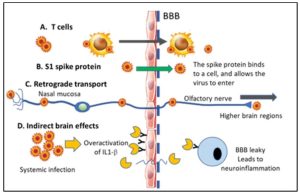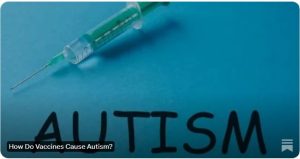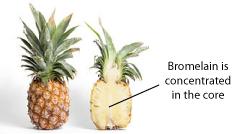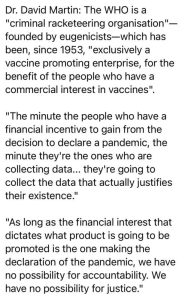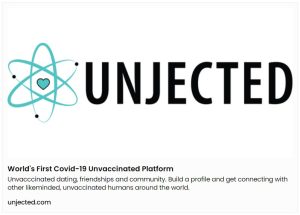If you want to raise your mood quickly then watching your favorite comedy show should fit the bill. But for a more permanent solution, adding one nutritious berry to your daily diet is a better mood-lifting strategy.
In fact, in the first trial of its kind, this berry was shown to do just that. And this isn’t your ordinary strawberry, blueberry, or raspberry—although these are loaded with brain-boosting antioxidants. We’re talking about a furry, egg-shaped berry that most people don’t associate with brain health.
Continued below. . .
|
A message from our sponsor: Reverse Alzheimer’s Summit
Unlock fun activities for brain health
Feeling like your brain’s stuck in slow motion?
Missing keys, forgotten names – sound familiar?
You’re not alone in this. With almost 7 million people affected by Alzheimer’s, the fear of losing our sharpness is real.
But what if you could just hit the refresh button on your brain, unveiling a sharper, more focused version of yourself?
Thanks to Heather Sandison, ND, we’ve got just the thing. Dive into Activities for Brain Health Guide, a powerful guide full of expert tips to help you:
- Boost your memory and focus: Wave goodbye to those “where did I put my keys?” moments. Rekindle the delight in recalling names, faces, and those little details that make life rich.
- Spark your creativity and energy: Feel alive and engaged with fun activities that challenge your mind and ignite your imagination.
- Move your body, empower your brain: Discover easy, enjoyable exercises that get your blood pumping and nourish your brain cells, leaving you feeling energized and focused.
This guide is perfect for:
Caregivers and loved ones: Find practical tips and insights to support someone with cognitive challenges and enhance their day-to-day experience.
Those seeking to maintain their own brain health: No matter your age, discover research-backed recommendations, from mindfulness practices to the joyful benefits of pets and the surprising mental boost of everyday activities like housekeeping.
Don’t wait! Claim your FREE guide today and embark on your journey to a sharper, happier, and more vibrant life.
>>> Click here to unlock your brain’s full potential! <<<
|
Kiwifruit, also called Chinese gooseberry, is one of the healthiest berries around. Of course, most people don’t realize that kiwi is in fact categorized as a berry. The plant is native to Asia and grown commercially in California. Kiwifruit grows on a vine and is green or gold in color.
The kiwi reportedly got its name from a New Zealand schoolteacher who brought seeds back from China in 1904. It was named “kiwi” after New Zealand’s national bird.
This unusual berry is high in vitamin C and also contains the antioxidants choline, lutein, and zeaxanthin. Some studies suggest that kiwi can help reduce blood pressure, promote easy, comfortable digestion and regularity, as well as improve wound healing.
Now, new research shows that kiwi can also promote healthy brain function.
“Significant reductions in mood disturbance
and fatigue…”
Kiwi has already been investigated in two trials for its psychological effects. A review of both trials involving 202 participants concluded that “[d]aily consumption of two gold kiwifruit was associated with significant reductions in mood disturbance and fatigue, and significant increases in well-being and vigor.”
One of these trials was conducted by psychologists from the University of Otago in Dunedin, New Zealand. They wanted to follow up their first trial by finding out how quickly mood benefits appear after starting daily consumption of kiwifruit.
Since vitamin C can also benefit mood in deficient subjects, and since kiwifruit is rich in vitamin C, the researchers wanted to determine whether higher levels of the vitamin were responsible for the improvements or whether there’s something intrinsic to kiwifruit that brings about the uplift in mood.
Kiwifruit Outperforms Vitamin C
For the trial they recruited 155 men and women aged between 18 and 35, of which at least three-quarters had low plasma vitamin C levels. They were then divided into three groups, taking either a 250 mg tablet of vitamin C, a placebo, or two kiwifruits every day for 28 days.
To document changes in a real-world environment they completed a daily smartphone survey to measure energy-fatigue (or vitality), mood states, flourishing (positive psychological well-being), sleep quality, sleep quantity and physical activity.
The results showed that:
- Plasma vitamin C reached saturation after two weeks whether through vitamin C supplements or kiwifruit.
- Kiwifruit improved vitality and mood within four days, peaking around 14 to16 days, and improved flourishing from day 14.
- Vitamin C marginally improved mood until day 12.
- Participants with low vitamin C status before the study began showed improved mood (vitamin C and kiwifruit) and flourishing (kiwifruit only).
Overall, significant improvements in vitality and mood were seen with kiwifruit when compared with placebo. What’s more, these improvements to vitality and mood were stronger than with vitamin C tablets alone.
How Does Kiwifruit Help?
Vitamin C is involved in producing neurotransmitters and peptide hormones, and acts as a catalyst for several enzymes, all of which are needed to maintain and promote healthy brain functioning and a balanced mood.
What’s more, vitamin C deficiency is associated with higher depression and cognitive impairment. Increasing vitamin C levels has been shown in clinical study to improve mood, vitality and well-being, and reduce depression.
In addition to vitamin C, kiwifruit contains antioxidant phytonutrients, such as flavonoids and carotenoids, which can reduce oxidative stress and inflammation. Researchers suggest that these anti-inflammatory and antioxidant pathways can play a role in mood and mental health outcomes, such as depression and anxiety. It’s also relatively high in fiber, folate (vitamin B9) and potassium, all of which are linked to better mental health outcomes.
Then there’s the dietary fiber in kiwifruit, which may also promote a healthy gut microbiome. This is associated with improved mood and mental health. Higher fiber and folate have been linked to lower levels of depression. And potassium has been shown to increase vigor and reduce depression, tension, and mood disturbances.
Kiwifruit is Chock-Full of Brain-Healthy
Nutrients
Professor Tamlin Conner, senior author of the study published in the British Journal of Nutrition in December, explained, saying, “It’s great for people to know that small changes in their diet, like adding kiwifruit, could make a difference in how they feel every day.”
Her colleague and first author, Dr. Ben Fletcher, added that the study “helps us see that what we eat can have a relatively fast impact on how we feel. Our participants had relatively good mental health to begin with so had little room for improvement, but still reported the benefits of kiwifruit…”
He also emphasized why it’s important to brain health to incorporate nutrient-rich foods like kiwifruit into the diet.
Dr. Fletcher said that while vitamin C tablets showed some improvements, it wasn’t the whole story. This underscores the need for eating whole foods that contain other nutrients critical to brain health and that between them have synergistic effects.
Best Regards,
The Awakening From Alzheimer’s Team
References:
Billows M, et al. Nutrients. 2022 Nov 3;14(21):4657.The Role of Kiwifruit in Supporting Psychological Well-Being: A Rapid Review of the Literature – https:// pubmed. ncbi. nlm. nih. gov/36364918/
University of Otago News Furry fruit improves mental health – fast 25 January 2024 – https:// www. otago. ac. nz/news/newsroom/furry-fruit-improves-mental-health-fast
Fletcher BD, et al. Br J Nutr. 2023 Dec 11:1-13. Smartphone survey data reveal the timecourse of changes in mood outcomes following vitamin C or kiwifruit intervention in adults with low vitamin C
– https:// www. cambridge. org/core/journals/british-journal-of-nutrition/article/smartphone-survey-data-reveal-the-timecourse-of-changes-in-mood-outcomes-following-vitamin-c-or-kiwifruit-intervention-in-adults-with-low-vitamin-c/A11392F65C78C20A7C2FA8BA1B5B7AAC
